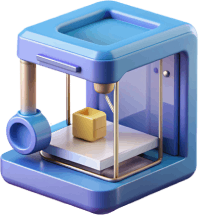How AI and ML Are Fueling Smarter Business

Artificial Intelligence and Machine Learning have passed the buzzword stage to become business essentials. These technologies enable businesses to make faster decisions, deliver better customer experiences, and operate in ways never before seen.
Amazon is a pioneer in this space. Its AI-powered recommendation engine learns from every click and purchase, customizing the shopping experience while boosting sales. Beyond recommendations, Amazon utilizes predictive algorithms to anticipate demand and optimize its global logistics network, ensuring items arrive faster and more efficiently.
Meanwhile, Shopify integrates AI to give small merchants enterprise-grade tools. Business owners can tap into data insights, automate marketing, personalize storefronts, and manage inventory with predictive analytics. This democratization of tech lets small sellers compete on a big stage — all without needing a data science team. OpenAI also represents a fundamental shift. Once a nonprofit research lab, it has evolved into a global platform providing advanced AI capabilities through APIs.
Tools like ChatGPT are helping businesses automate support, generate content, and enhance services — turning cutting-edge research into usable infrastructure that anyone can build on. In finance, streaming, healthcare, and education, AI is becoming the quiet force behind smarter systems. It's not replacing people — it's empowering them with speed, insight, and scale.
Tesla: Reinventing More Than Just the Car
Tesla is best known for sleek electric cars, but its most profound innovations are under the hood — and behind the scenes. The company has reimagined battery technology, manufacturing processes, and energy storage systems in ways that are changing how entire industries operate. Tesla's battery advancements have helped drive down the cost of electric vehicles (EVs) while increasing their range and performance. Through vertical integration and in-house battery production, Tesla is able to move more quickly and innovate more deeply than traditional automakers.
Just as impressive is its "Gigafactory" model — massive, highly automated facilities designed for speed, scale, and efficiency. These factories utilize a combination of robotics, artificial intelligence, and custom-built software to streamline manufacturing processes, minimize waste, and reduce costs. It's not just about building electric cars — it's about reinventing how things are made. Tesla's innovations are influencing sectors far beyond the automobile industry — from renewable energy to robotics. It shows how rethinking the process, not just the product, can lead to transformative impact.


